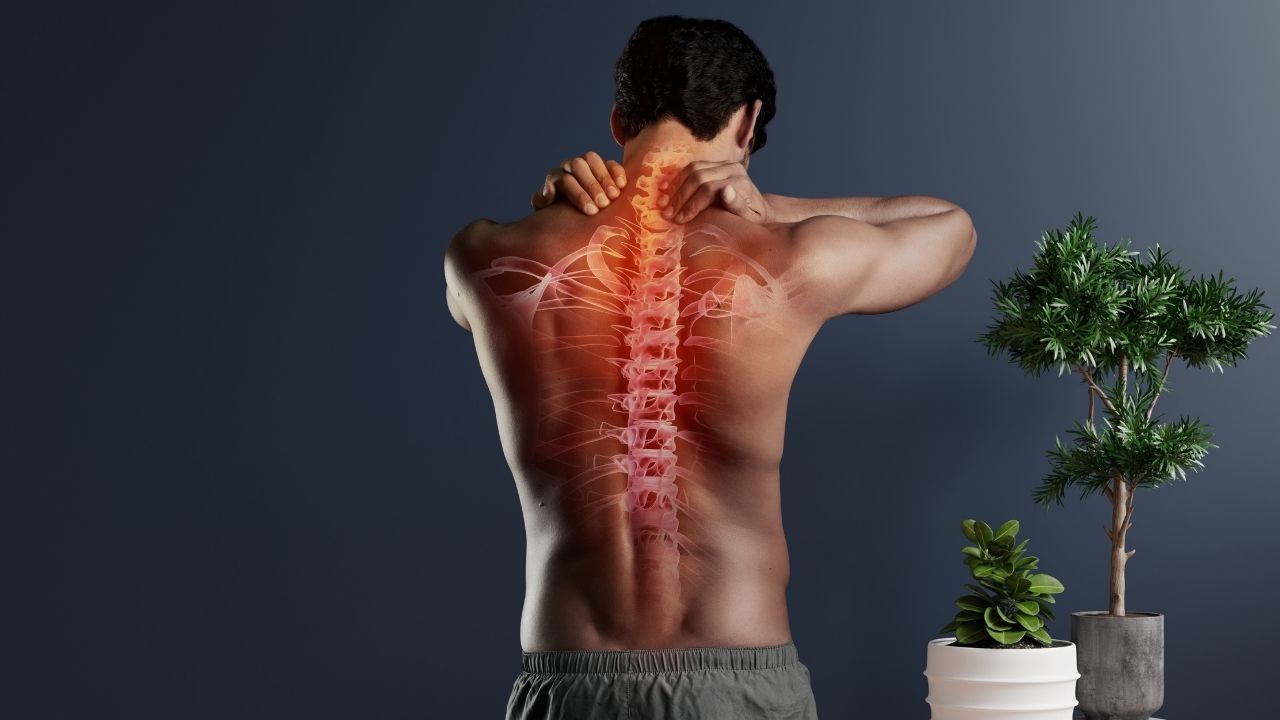
Treating Chronic Pain
Back pain is a common ailment that affects millions of people worldwide. While most cases of back pain can be treated non-surgically, there are some instances where back surgery may be the best course of treatment. In this article, we will explore the role of back surgery in treating chronic pain.
Chronic pain is defined as pain that persists for more than three months. It can be caused by a variety of conditions, including herniated discs, spinal stenosis, and degenerative disc disease. Chronic pain can have a significant impact on a person’s quality of life, making it difficult to perform daily activities and even affecting their mental health.
When non-surgical treatments such as physical therapy, medications, and injections fail to provide relief, surgery may be considered. The goal of back surgery is to alleviate the pressure on the nerves or spinal cord and restore function to the affected area.
One of the most common types of back surgery is a discectomy. This procedure involves removing the portion of a herniated disc that is pressing on a nerve. A laminectomy, on the other hand, involves removing a portion of the bony arch (lamina) of the spinal cord to relieve pressure on the spinal cord or nerves.
In some cases, fusion surgery may be recommended. This involves fusing two or more vertebrae together to stabilize the spine and reduce pain. This type of surgery may be recommended for conditions such as spinal stenosis or degenerative disc disease.
While back surgery can be effective in treating chronic pain, it is not without risks. As with any surgery, there is a risk of infection, bleeding, and nerve damage. There is also the possibility that the surgery may not be successful in relieving pain.
It is important for individuals to carefully consider the potential risks and benefits of back surgery before making a decision. They should discuss their options with their healthcare provider and carefully weigh the risks and benefits of surgery versus non-surgical treatments. In addition, they should make sure to choose a highly skilled and experienced surgeon who has a successful track record in performing the type of surgery they need.
Recovery time after back surgery can vary depending on the type of procedure performed and the individual’s overall health. In general, individuals can expect to spend several days in the hospital after surgery and may need to wear a back brace for a period of time. Physical therapy may also be recommended to help restore strength and mobility to the affected area.
It is important for individuals to follow their surgeon’s post-operative instructions carefully to ensure proper healing and minimize the risk of complications. They should also communicate any concerns or unusual symptoms with their healthcare provider as soon as possible.
In conclusion, back surgery can be an effective treatment option for chronic back pain that has not responded to non-surgical treatments. However, it should only be considered after careful consideration of the risks and benefits and in consultation with a highly skilled and experienced surgeon. With proper care and follow-up, individuals can experience significant relief from chronic back pain and regain their quality of life.
What Is the Most Common Type of Back Surgery?
Back pain is a common ailment that affects millions of people worldwide, and in some cases, surgery may be necessary to alleviate the pain and restore function. There are various types of back surgery available, depending on the cause of the pain, and the most common type of back surgery is a discectomy.
A discectomy is a surgical procedure that involves the removal of the portion of a herniated disc that is pressing on a nerve. A herniated disc is a condition where the soft, jelly-like substance inside the disc protrudes through a tear in the disc’s outer layer, compressing a nerve root or the spinal cord.
The goal of a discectomy is to relieve the pressure on the affected nerve and alleviate the pain and other symptoms associated with a herniated disc. The procedure is performed under general anesthesia, and the surgeon makes a small incision over the affected disc. They then use specialized tools to remove the portion of the disc that is compressing the nerve.
In some cases, a laminectomy may be performed in conjunction with a discectomy. A laminectomy involves the removal of a portion of the bony arch (lamina) of the spinal cord to relieve pressure on the spinal cord or nerves. This procedure is commonly performed to treat conditions such as spinal stenosis, a narrowing of the spinal canal that can compress the spinal cord and nerves.
Another common type of back surgery is spinal fusion, which involves fusing two or more vertebrae together to stabilize the spine and reduce pain. This procedure may be recommended for conditions such as degenerative disc disease, where the discs between the vertebrae wear down and cause pain and instability in the spine.
Spinal fusion can be performed using various techniques, including using bone grafts, metal hardware, and synthetic materials. The goal of the procedure is to create a solid, stable structure that supports the spine and reduces pain and other symptoms.
While discectomy and spinal fusion are the most common types of back surgery, other procedures may be recommended depending on the individual’s specific condition and symptoms. These may include laminotomy, foraminotomy, and artificial disc replacement.
It is important to note that back surgery is not always necessary for back pain and should only be considered after non-surgical treatments have been exhausted. Non-surgical treatments may include physical therapy, medications, and injections.
In conclusion, a discectomy is the most common type of back surgery and involves the removal of the portion of a herniated disc that is compressing a nerve. Spinal fusion and laminectomy may also be recommended in some cases. However, it is essential to carefully consider the potential risks and benefits of surgery and discuss all treatment options with a healthcare provider before making a decision.

How Long Does a Back Surgery Take to Recover?
Back surgery can be a major procedure, and recovery time can vary depending on the type of surgery and individual factors such as age, overall health, and the extent of the surgery. In general, it may take several weeks to several months to fully recover from back surgery.
Immediately following the surgery, the individual may spend some time in the hospital for monitoring and pain management. Depending on the type of surgery, they may be required to wear a back brace or support garment to provide stability and support during the healing process.
Physical therapy and rehabilitation may also be necessary to help the individual regain strength and mobility in the affected area. The duration of physical therapy can vary, depending on the extent of the surgery and the individual’s overall health and progress.
For a discectomy, the recovery time can range from a few weeks to several months, depending on the individual. Typically, the individual may experience some pain and discomfort in the affected area for several weeks after the surgery. They may also need to limit their activity level and avoid certain movements or positions to allow the area to heal properly.
For a spinal fusion, the recovery time can be longer, ranging from several months to a year or more. This is because the fusion process can take some time, and the individual may need to avoid certain activities during the healing process.
It is essential to follow all post-operative instructions provided by the healthcare provider to ensure proper healing and recovery. This may include instructions on wound care, medication management, physical therapy, and activity restrictions.
It is also important to keep in mind that recovery time can vary depending on the individual, and some people may experience a faster or slower recovery than others. Factors such as age, overall health, and the extent of the surgery can all affect the recovery process.
Is Back Surgery Very Painful?
Back surgery can be painful, but the level of pain experienced can vary depending on the type of surgery, individual pain tolerance, and other factors. Immediately following the surgery, the individual may experience some pain and discomfort in the affected area. This is normal and can be managed with medication and other pain management techniques.
In some cases, the pain may persist for several weeks or even months after the surgery as the area heals and the body adjusts to the changes made during the surgery. However, pain management techniques such as medication, physical therapy, and rehabilitation can help to alleviate this pain.
It is important to keep in mind that pain is a subjective experience and can vary greatly from person to person. Some individuals may experience very little pain after back surgery, while others may experience more significant pain. It is important to discuss any concerns about pain with a healthcare provider to develop a pain management plan that is tailored to the individual’s needs.
How Painful Is Back Surgery?
Back surgery can be painful, but the level of pain experienced can vary depending on the type of surgery, individual pain tolerance, and other factors.
Immediately following the surgery, the individual may experience some pain and discomfort in the affected area. This is normal and can be managed with medication and other pain management techniques.
In some cases, the pain may persist for several weeks or even months after the surgery as the area heals and the body adjusts to the changes made during the surgery. However, pain management techniques such as medication, physical therapy, and rehabilitation can help to alleviate this pain.
It is important to keep in mind that pain is a subjective experience and can vary greatly from person to person. Some individuals may experience very little pain after back surgery, while others may experience more significant pain. It is important to discuss any concerns about pain with a healthcare provider to develop a pain management plan that is tailored to the individual’s needs.
The Study of Treating Chronic Pain
A recent comprehensive study published in the Journal of Spinal Disorders examined the long-term outcomes of patients who underwent different types of back surgery for chronic pain. The study analyzed a large cohort of patients over a five-year period and found that while back surgery significantly improved pain and function in most cases, the type of surgery and individual factors played a crucial role in determining the extent of pain relief and recovery. This research underscores the importance of personalized treatment plans and thorough discussions with healthcare providers to make informed decisions about back surgery.
Healthy Türkiye Notes
The recovery time after back surgery can vary depending on the type of surgery, the individual’s health, and other factors. While recovery can be challenging, many people are able to return to their normal activities with time and proper care. It is important for individuals to carefully follow their healthcare provider’s instructions for post-operative care, including physical therapy and rehabilitation, to optimize their chances of a successful recovery. Additionally, communication with the healthcare team about any concerns or pain is crucial to developing a personalized pain management plan that can help alleviate discomfort and support a smoother recovery.



